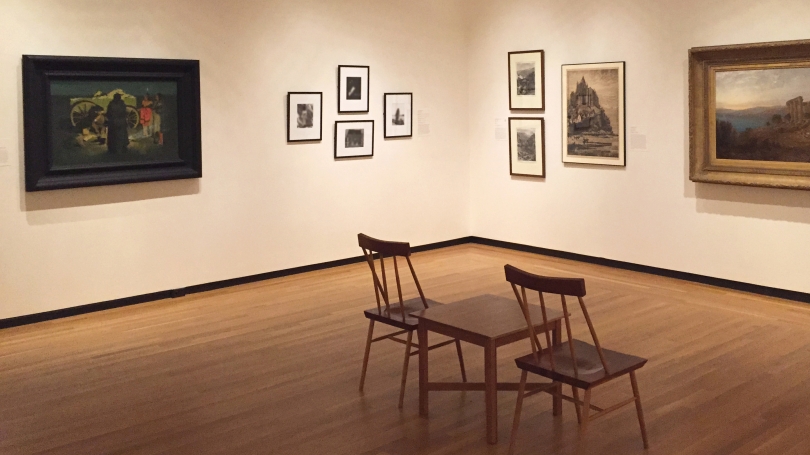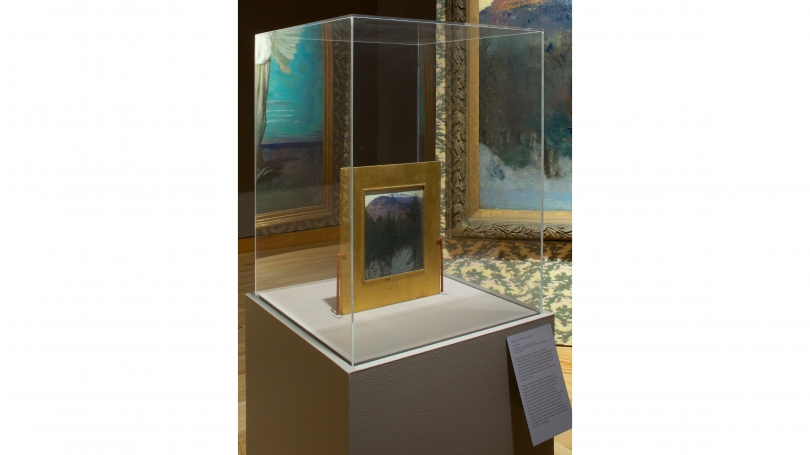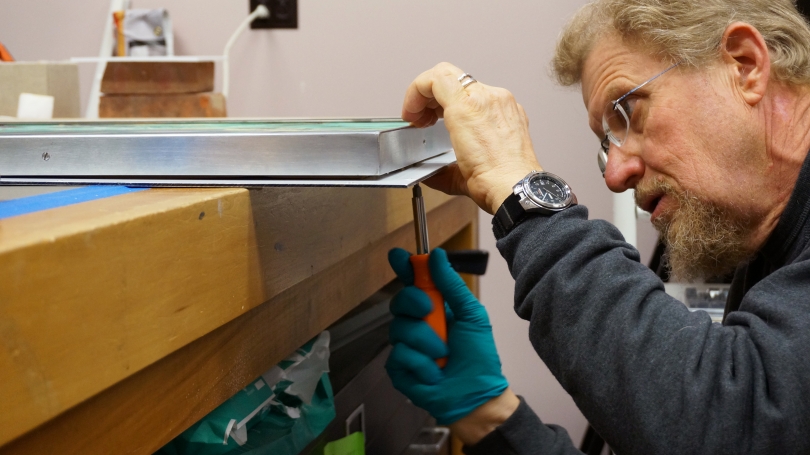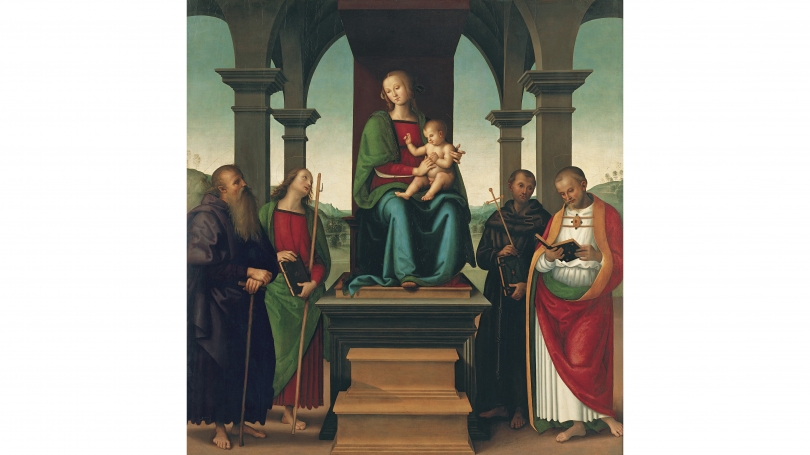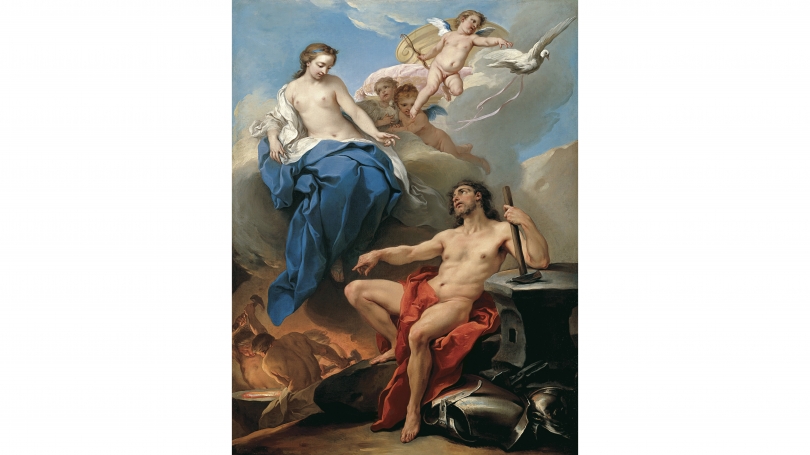Plan a road trip to see works from the Hood’s permanent collection.*
One of the challenges museums and institutions face when undergoing a major renovation or expansion project—the Hood is doing both—is figuring out how to care for the collection during such an invasive process, which takes place in what is otherwise a safe and secure home to thousands of works of art and culturally significant objects. While much of the Hood’s collection will be safely stored offsite for the duration of the construction, nearly fifty works of art will travel to more than a dozen museums throughout the northeast and as far away as Tampa, Fort Worth, and San Francisco. A few works will appear in multiple venues across the country in conjunction with traveling exhibitions; others will be incorporated into permanent displays at college and civic art museums.
Staff at the Hood have spent months organizing and coordinating these long-term loans, generally known as such because they will remain at other institutions for more than a year, to ensure that the agreements are mutually satisfactory for both institutions. While this is a large undertaking, the opportunity for both parties is great. Dartmouth alumni and supporters of the Hood Museum of Art throughout the country can experience our collection in new ways and in new galleries, while other visitors to the borrowing institution will get to enjoy works they might not otherwise see.
Among the museums slated to host works from the Hood are several within easy driving distance of the Upper Valley. If you traveled to the Currier Museum of Art in Manchester, New Hampshire, this winter, you may have seen the Hood’s Maxfield Parrish painting Hunt Farm (Daybreak), as part of their Maxfield Parrish: The Power of the Print exhibition. This work will remain on view at the Currier, along with eight other highlights from the Hood’s collection that will join it, including Pompeo Batoni’s portrait William Legge, Second Earl of Dartmouth (1731–1801), and Jan Davidsz. de Heem’s Still Life with Grapes.
Across the river in Vermont, both the Middlebury College Art Museum and the Fleming Museum of Art, University of Vermont, have selected works from the Hood, including a fragment from an Egyptian sarcophagus for Middlebury and paintings by Georgia O’Keeffe, Alex Katz, and Ivan Albright for UVM.
To our east, works by Jaune Quick-to-See Smith, Ilse Martha Bischoff, and Jared French will travel to the Colby College Museum of Art in Waterville, Maine. An hour south, in Brunswick, the Bowdoin College Museum of Art is currently presenting Frederic Remington’s Shotgun Hospitality, which was included in their 2015 summer exhibition Night Vision: Nocturnes in American Art, 1860–1960.
Four works will visit the art-rich Berkshires community: paintings by Abbott Thayer, Claude Lorrain, Thomas Eakins, and the Cuzco School will be housed at the Williams College Museum of Art. Several contemporary and traditional African works, along with three images of Classical subjects, will travel to the Smith College Museum of Art, also in western Massachusetts.
Loans to Dartmouth’s Ivy League cohort include the Hood’s Virgin and Child with Saints by Perugino and workshop, traveling to the Yale University Art Gallery, and the Berlin Painter’s Panathenaic amphora, traveling to the Princeton University Art Museum. The exhibition Everywhen: The Eternal Present in Indigenous Art from Australia, on view at the Harvard Art Museums through September 18, 2016, includes three painted hollow-log poles and one bark painting from the Hood’s Owen and Wagner Collection of Contemporary Aboriginal Australian Art.
The Neuberger Museum of Art, Purchase College, State University of New York, will exhibit the Hood’s painting by Louise Fishman, Green’s Apogee, in a retrospective of the artist’s work from April 3 to July 31, 2016. Further afield, Frank Stella’s Chocorua IV has been traveling with the exhibition Frank Stella: A Retrospective, which began at the Whitney Museum of American Art, New York City, in the fall of 2015, and will go on to the Modern Art Museum of Fort Worth from April 17 to September 4, 2016, before appearing at the Fine Arts Museums of San Francisco, where it will be on display from November 16, 2016, to February 26, 2017. Pablo Picasso’s Guitar on a Table is currently on view in the exhibition Picasso: The Great War, Experimentation, and Change at the Barnes Foundation in Philadelphia until early May. It will then travel to the Columbus Museum of Art, where it will be on view as part of that exhibition from June 10 to September 11, 2016, and will remain there through the completion of the Hood’s expansion project. A selection of ancient Greek and Roman objects will travel to the Tampa Museum of Art, and this summer San Francisco’s de Young Museum will feature Ed Ruscha’s iconic Standard Station, Amarillo, Texas, as part of their exhibition Ed Ruscha and the Great American West, running from July 16 to October 9, 2016.
The Hood is excited to have three major paintings travel to the Toledo Museum of Art as well: Lawrence Alma-Tadema’s The Sculpture Gallery, Paul Sample’s Beaver Meadow, and Mark Rothko’s Lilac and Orange over Ivory.
The opportunity to send major works of art from the Hood’s collection on long-term loan to institutions around the country is crucial to the success of the collections move during the renovation and expansion period. It is equally significant that we get to share these works with a greater number of students, faculty, and the general public. While the Hood’s registrars are glad to know these works are in good hands for the interim, curators at the other museums enjoy adding them to their galleries, if only for a few years, for research and study, to fill gaps in their collections, or to enhance their installations by making new connections or pairings. Initiatives such as these are common in the museum field; the Hood was host to loans from the Currier during their last major building project, for example. This is one of the wonderful aspects of working with colleagues and institutions who have the same goals of sharing art with their visitors, even during periods of change.
See Hood on the Road for a list of works on loan from the Hood Museum of Art during the expansion, plus information on related events, and visit our expansion page regularly for updates on our progress.
To learn more about some of these works of art, see our brochure series A Closer Look.
*Before traveling to see art lent by the Hood, it would be wise to check with the borrowing museum to see if the work is currently on view.
**A version of this story appeared in the spring/summer 2016 issue of the Hood Quarterly.
